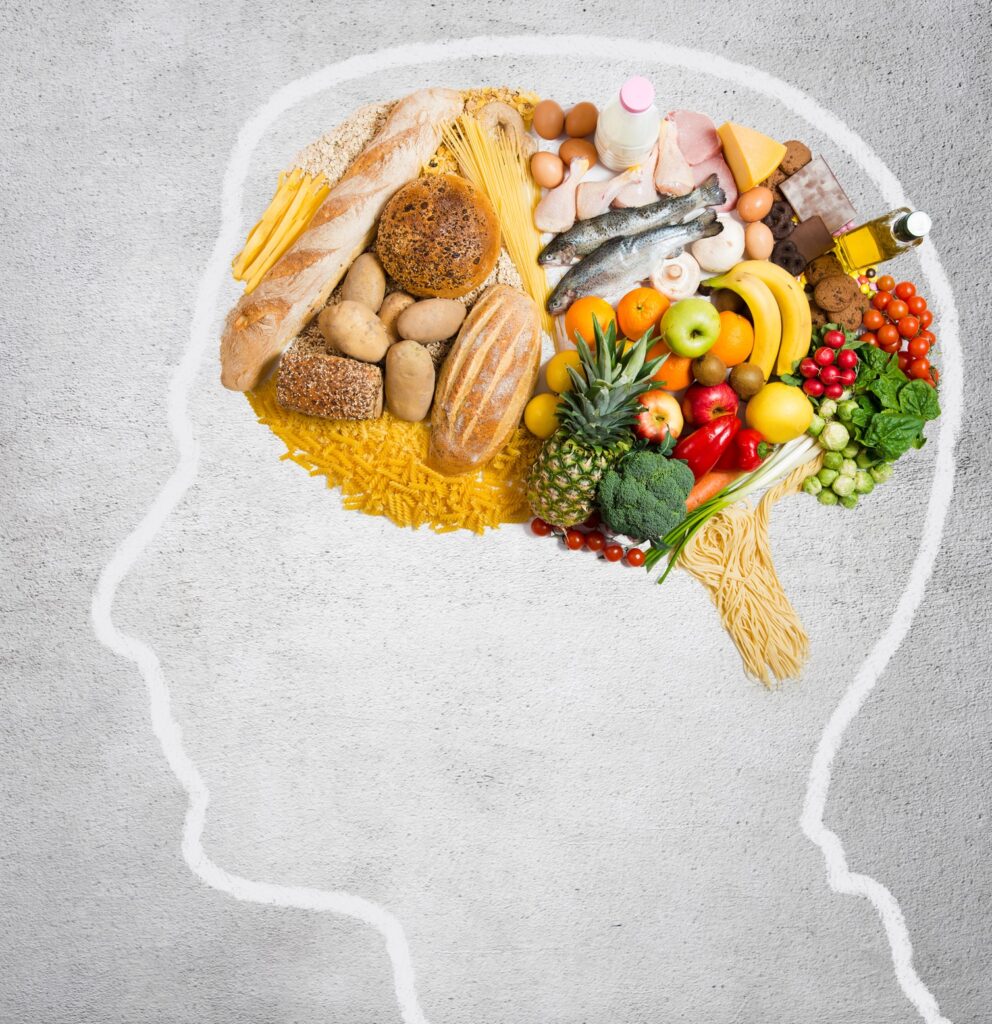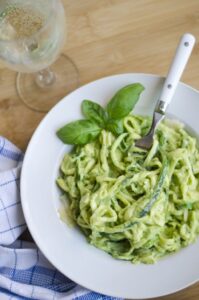
Do you trust your gut? If so, then intuitive eating may be right for you. If the restriction, constant focus, and limiting thoughts associated with traditional diet plans have you feeling depressed, we would like to introduce intuitive eating— a fabulous way to establish a healthy and thriving relationship with your body and mind for optimized health and wellness.
Are you wondering:
- What is intuitive eating?
- Why is intuitive eating important for my health?
- How can I start intuitively eating even if I’m busy?
If so, read on! We’ve got the answers to these questions and more.
Bonus: we’re going to give you some fresh, healthy recipes for spring that you can customize— no matter what your body is telling you it needs to stay healthy.
What is Intuitive Eating?
Scientifically, intuitive eating is defined as eating according to internal hunger, satiety, and fullness cues. What does this look like? Think back to a time where you couldn’t get a craving out of your head—say peanut butter. Your body could be communicating to you that you need protein and fat. So, you listen to your body and eat a spoonful of peanut butter and pay attention to whether you are still hungry. Being intentional when considering whether your body is asking for more food (or a particular food) is where intuitive eating places trust in your body to guide you in your diet.
Mentally, intuitive eating eliminates the labels of “good” or “bad” associated with certain foods. We understand that if you experience chronic pain, inflammation, or an autoimmune disease that some foods may be off the table entirely. We’ve discussed these inflammation flare-up foods in-depth in recent blogs if you’d like to familiarize yourself with them. But you can still intuitively eat and avoid foods you know will stoke the fires of inflammation but using simple swaps (more on that in the recipes below).
Finally, eating intuitively isn’t about losing or gaining weight or obtaining a particular body image. The goal is to concentrate on foods that promote the best physical and mental health possible.
Does Intuitive Eating Keep You Healthy?
In The Hache Protocol For Pain Resolution ™, we talk a lot about the five interactive elements of living pain-free for life. These five pillars, stress reduction, nutrition, fitness, sleep, and microcurrent therapy, work so well to keep pain and chronic illness at bay because they create a holistic (whole-body) approach to wellness.
So, with that in mind, let’s examine some of the scientific research behind the idea that intuitive eating is indeed a successful holistic approach to staying healthy. In 2014, Schafer and Magnuson published “A Review of Interventions that Promote Eating by Internal Cues” in the Journal of the Academy of Nutrition and Dietetics. This review analyzed all published studies that examined intuitive eating interventions (this review included 24 relevant articles about 20 different peer-reviewed interventions).
Here are some of the highlights from the review:
- Weight loss and maintenance— The authors of this review determined that obese or overweight people who learned how to intuitively eat saw noteworthy decreases in weight and/or maintained weight.
- Lower cholesterol— One study observed that participants substantially decreased total and LDL cholesterol (“bad cholesterol”).
- Improved blood pressure— Several studies determined that blood pressure improved in those who tried intuitive eating.
- Increased physical activity— Due to an emphasis on exercising for energy and pleasure over weight loss, those who tried intuitive eating ended up getting active more often than those who did not.
- Increased introspective awareness— Intuitive eating helped establish a better ability to notice physical sensations within participant’s bodies like fast heartbeat, heavy breathing, fullness, and hunger.
- Decrease in disordered eating— Many studies found that disordered eating behaviors like loss of control, disinhibition, binge eating, and anorexia decreased with intuitive eating.
- Improved mental wellbeing— An emphasis on body acceptance promoted feelings of improved body satisfaction, self-acceptance, decreased body image avoidance, decreased drive for thinness, decreased body preoccupation, and decreased negative self-talk.
The bottom line: the authors of this review determined that those who tried intuitive eating kept up with a healthier diet in the long term over those on other diet plans. Additionally, participants in intuitive eating studies developed a much healthier relationship with food, resulting in improved lipids, blood pressure, and cardiorespiratory function (even in cases where weight was not lost). Lastly, the positive mental benefits were significant in those who intuitively ate with decreases in depression and anxiety and increased self-esteem and body image.
How do You Start Intuitively Eating?
We understand it can feel challenging and overwhelming to overhaul your lifestyle and diet completely. The way we think about food is deeply ingrained in us from childhood and reinforced by societal attitudes, cultural norms, and familial relationships. But the beautiful thing about intuitive eating is that it will actually relieve you of the stress and burden many of us feel around maintaining a healthy diet and body.
Try these four practical approaches to incorporating intuitive eating into your routine today:
- Check-in with yourself— Eating intuitively is a whole new way of living. This means you need to get in touch with yourself often and determine how things are going. If the stress and noise of the day have you feeling out of touch with your inner hunger and satiety cues, try grounding yourself or practicing some positive self-affirmations before it’s time for a check-in.
- Acknowledge how different foods make you feel— Does eating a handful of nuts in the middle of the day get you over the 3 p.m. hump? Does a cup of coffee in the morning leave you crashing at noon? Use a journal to track how different foods affect your wellbeing, productivity, and mood. You will quickly arrive at a picture of how certain foods are affecting you. From there, you can start to recognize the feelings associated with said foods instinctively without a journal.
- Redefine “satisfaction” when it comes to food— Many of us gain immense pleasure from eating. And that’s okay—food should be enjoyed and savored. But if you are eating out of pain, boredom, or stress, you may want to step back and reevaluate whether being “satisfied” from food means a feeling of pleasure and novelty or a feeling of health and vitality.
Try one or all of these simple steps to include intuitive eating principles into your diet today and see how they change your energy levels, overall happiness, and health.
Fresh Healthy Recipes for Spring
Once you get in touch with your body and start recognizing which types of nutrients you are craving, you can use these recipes as a framework for giving your body precisely what it needs.
Intuitive Salad
Salads are an excellent way to fill in the gaps with whatever your body is craving. Start with a bed of fresh greens and fix it up with whatever you like! There’s so much beautiful fresh produce available at local farmer’s markets and health food stores in the spring—take a spin around the store or market and see what calls out to you.
- Craving protein?
Top your salad with hard-boiled eggs, poached chicken breast, baked tofu, sliced low-sodium nitrate-free deli meats, grilled fish, or sliced steak.
- Craving Fat?
Top your salad with cashews, sunflower seeds, a homemade ranch dressing, olive oil, tuna in olive oil, or anchovies.
- Craving sweets?
Top your salad with fresh berries, dried raisins, or dried cranberries.
- Craving salt?
Top your salad with bacon crumbles, feta cheese, or whip up a tamari dressing.
Customizable Intuitive Pesto “Pasta”

This recipe can be made with either whole wheat pasta or zucchini “zoodles” and parmesan cheese or nutritional yeast as a cheese substitute to suit any diet, craving, or health condition.
Ingredients:
- 4 organic zucchinis, spiralized (or 1 lb. of whole wheat or gluten free pasta)
- 1 tbsp. sea salt or Himalayan pink salt
- 1 ripe avocado (or greens such as spinach or chard)
- 3 oz. of nutrition yeast (or 3 oz. grass-fed raw milk parmesan cheese)
- I lemon, juiced
- 2 cloves of garlic
- 1 handful of fresh basil leaves
- 2 oz. water
Instructions:
- Blend avocado (or greens, either cooked or raw), yeast (or cheese), lemon juice, garlic, basil, and water in a blender until smooth and creamy.
- Place spiralized zucchini in a large bowl with salt and sit for 20 minutes to release water (or boil pasta).
- Drain water off zucchini noodles (or pasta) and toss in your pesto.
Enjoy a fresh, delicious, customizable spring recipe that is sure to delight the tastebuds.
Looking for Healthy, Customizable Snack Ideas?
Sometimes we’ve just GOT to have a delicious snack! To keep you going through your busy day (or to treat yourself), Check out our blogs:





